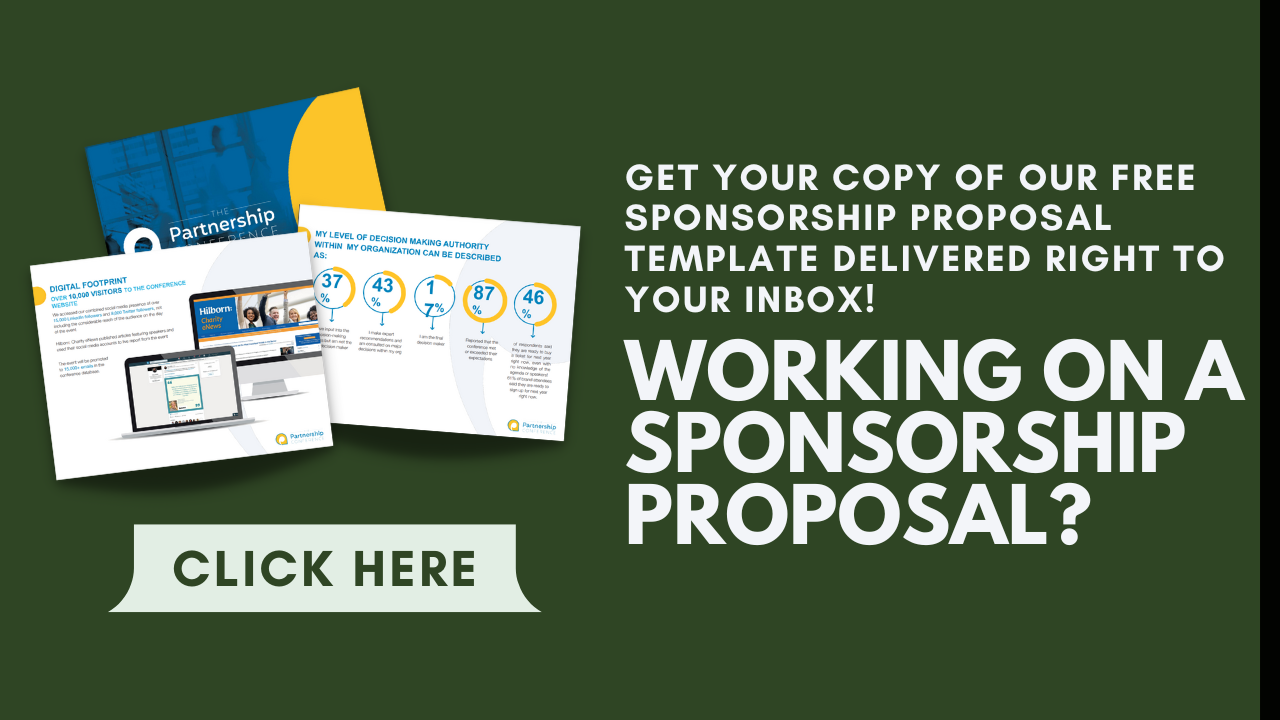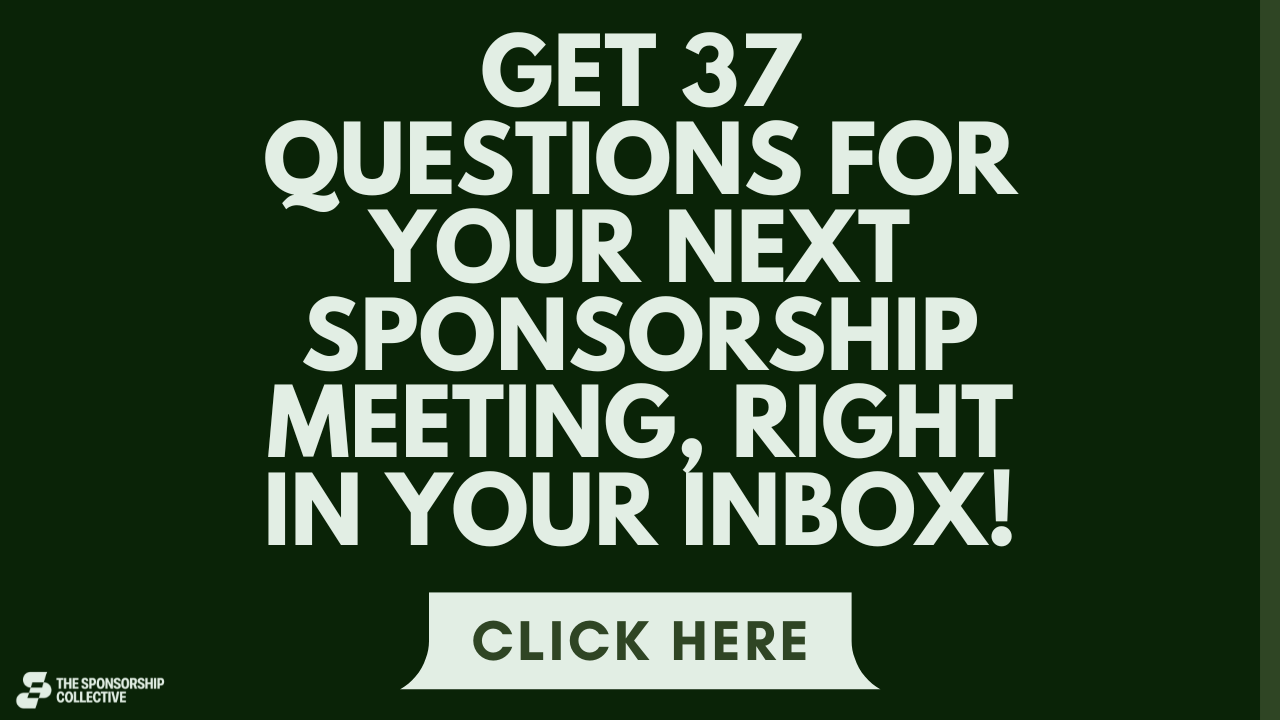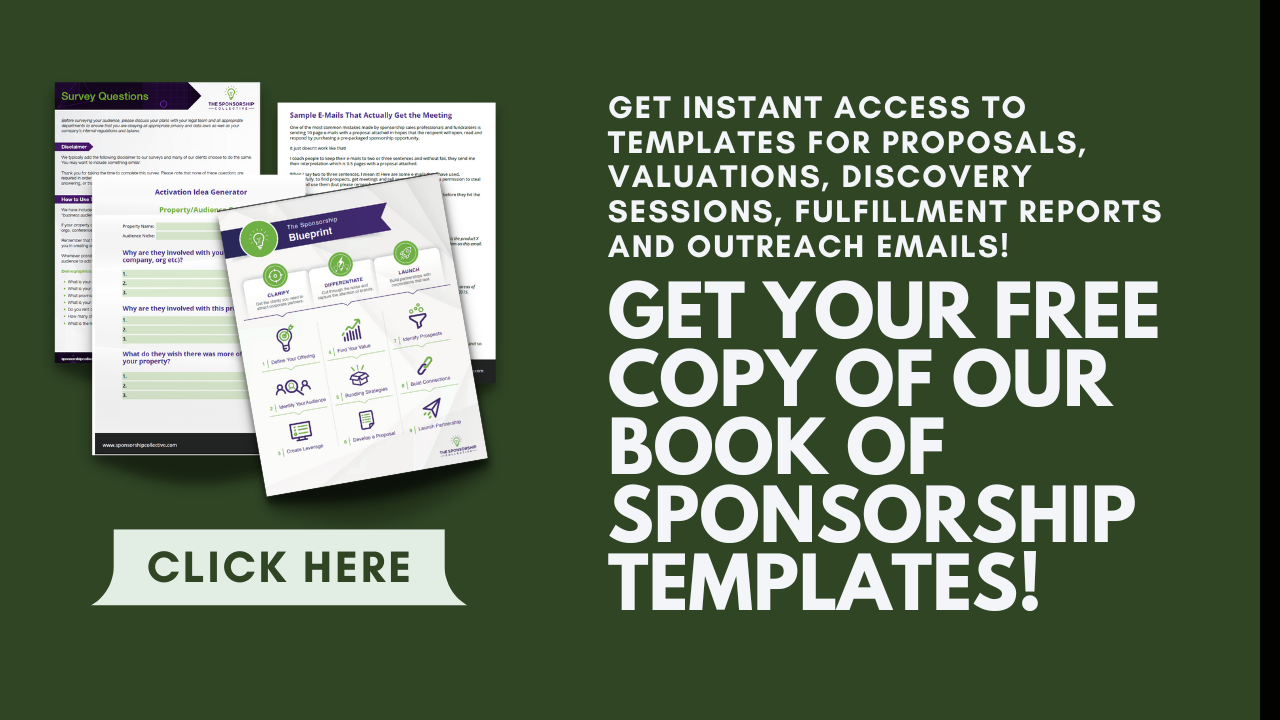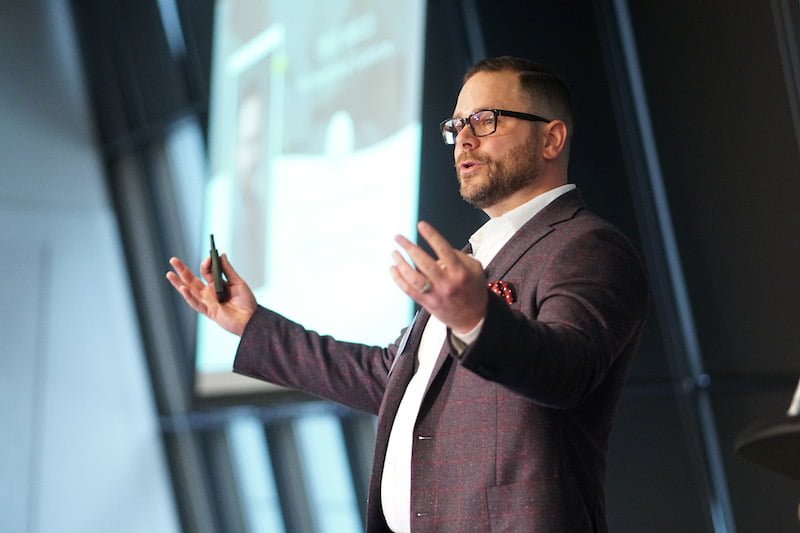Sponsorship is an essential components of any corporate fundraising strategy. If you aren’t doing sponsorship as part of your fundraising plan, you should be! When working with clients, I see some some misconceptions come up again and again, and while this post is targeted at the small shop, I think all shops can relate.
Before you dive in, if you are involved with a charity or a non profit looking for sponsorship, check out these titles in our “sponsorship for causes” series:
Cause Marketing versus Corporate Sponsorship
Definitive Guide to the Sponsorship Proposal
The Biggest Problem with Sponsorship and How You Can Fix It
Three Things Missing From Every Sponsorship Package
Corporate Social Responsibility a Users Guide for Nonprofits
How to Start a Sponsorship Program for Your Nonprofit
3 Most Common Barriers To Good Cause Sponsorship
Things Sponsors Say: “We Don’t do Sponsorship”
What I Wish I Knew at the Beginning of My Sponsorship Career
The small shop, defined as less than three revenue generation staff or under $2 million in revenue, is a particularly interesting and challenging environment to do sponsorship. In part two of this series, we’re going to look at some tactics, campaigns and strategies for corporate fundraising in the small shop. Before we do that though, it’s important that we consider some of the mistaken beliefs about corporate fundraising that could be holding you back.
Here are some of the most common misconceptions I see when working with small shops in building a sponsorship strategy.
Sponsorship Mistake: Seeing Companies as Cash Cows
When I’m working with small shops I find that their boards focus heavily on sponsorship and corporate philanthropy as the main source of revenue generation. The typical justification for this view is that “companies have lots of money” or that “company X gives away a ton of money every year.” It can be perceived as easier to ask companies for money than people.
The truth is, companies invest money in charities – but always to achieve a certain aim. Even if your request is small, your prospect will demand a return on their investment and, in some cases, small requests will be ignored by the large company because they don’t offer a big enough impact.
Should you be approaching companies for money? Absolutely! But not at the expense of your other forms of fundraising and never with the assumption that a successful application will have a lottery-like impact on your charity.

How to Fix It
This one is all about perception, which makes it one of the easiest charity sponsorship mistakes to fix.
In charity sponsorship especially, it’s easy to get very caught up in the “money, money, money” mindset. However, you must remember that even when approaching sponsorship in charitable fashion, you’re not seeking a donor.
A sponsor contributes to and expects marketing outcomes. If you’re not ready to provide those outcomes to a sponsor, you won’t get much money, as the sponsorship opportunity is low-value.
Rather than selecting prospective sponsors based on their “cash cow” status, you’re better off seeking alignment between the sponsor’s products and services and your target market.
Sponsorship Mistake: Focusing on Corporate Philanthropy
I see a major emphasis by most small shops on Corporate Social Responsibility (CSR) grants as the main focus for their revenue goals in the corporate space. CSR programs operate much like foundation grants and can feel much like traditional philanthropy. The problem with focusing just on CSR is that you miss out on the unrestricted revenue of sponsorship.
CSR is highly competitive and only represents one stream of corporate fundraising. You should definitely have a CSR strategy but not to the exclusion of the other, more lucrative types of corporate development. Make sure you have a sponsorship strategy as well.
How to Fix It
Philanthropy and sponsorship don’t mix. They never have, and I doubt they ever will. The reason goes back to my points from above.
Philanthropy assumes donations that companies decide to give to your nonprofit or organization out of the goodness of their hearts. Donations are excellent, don’t get me wrong, and you should continue your fundraising efforts.
However, keep them separate from sponsorship. Aim to provide marketing outcomes for your sponsor and veer away from the philanthropic mindset.
Sponsorship Mistake: Thinking You Have No Audience
This stems from the belief that in order to attract sponsors to an event or campaign, you need to have 10,000 people present. Think more about who attends your events instead of how many. I have worked with charities running events that attract 100 people or less. These charities were convinced that they didn’t have an audience to attract sponsors and so they never pursued it.
In one case, after some analysis we determined that all 100 people at an event were young professionals in a major city. What did this group have in common? An above average income and a desire to buy a new house. One hundred warm prospects, all looking to buy $500,000 homes, is an incredibly valuable asset to real estate companies, lawyers and accountants…and that’s who we went to for sponsorship.
How to Fix It
Instead of focusing on the number of attendees, think about who is coming to your events, what they care about and who wants to market to them.
Once you retool your thinking, it’s time to get to know your audience, no matter how small. To do that, you need audience data via a survey. Understand what makes your audience tick on a demographic, geographic, and psychographic level.
This information will help you divide your audience into niches. It may seem counterintuitive to split a small audience into already smaller segments, but it’s anything but.
Sponsors want segmented data. The more concentrated the information, the better, as your data helps them decide whether your audience is worth pursuing for them based on their target market.
Ultimately, that’s what a sponsor wants: potential customers. If you only have 100 of them, that’s obviously not as preferable as if you had 10,000, but most sponsors shouldn’t turn down an opportunity to access their target market.
Sponsorship Mistake: Focusing on Logo Placement
Putting a company logo on your website can be worth a few pennies up to a few dollars for 1,000 views…if you’re lucky! Logo placement has value to some companies but for most in the private sector, sponsorship is a way for them to find and engage their customers.

Most of the sponsorship agreements that I negotiate involve logo placement in some way but it’s usually a secondary part of the deal. Most of the negotiation is focused on product placement, speaking opportunities, media opportunities, social media campaigns, naming rights and growing the company’s database. They want people to engage with their brand, not just see their logo.
It’s important to think of ways that go beyond logo placement, where you can connect your audience to your sponsors in meaningful ways and then build your corporate sponsorship strategy around that.
How to Fix It
Most sponsorship seekers, whether in the charitable sphere or elsewhere, who rely too heavily on logo placement don’t know what other kinds of assets and activations are valuable.
Fortunately, it’s easier to dream up activations than you think. A good activation needs to solve at least one sponsor need and one audience need concurrently.
Activations can cost $500 or $50,000. They can even be free. If they achieve the two goals above, the cost doesn’t matter.
So, then why are logos frowned upon as an activation? It has nothing to do with the cost and everything to do with the quality.
Think of what a logo achieves. I’m sure you’ve attended galas and charitable events where the best a sponsor received was logos, right? So, what did that teach you? You learned the company’s name, and that’s it.
Perhaps you’ll look up the sponsor company later if you still remember their name, but if you don’t? Then it’s lost to time.
The best a logo can achieve is brand awareness. Most sponsors seek brand awareness as a bare minimum, and others aren’t interested in it at all because they already have it.
You must have a discovery session to discuss a sponsor’s needs and challenges, then plan your activations based on those. Activations like speaking opportunities, interviews, naming rights, contests, and giveaways are much more valuable.
Sponsorship Mistake: Focusing on the Proposal or One Pager
I have heard stories from clients and colleagues that they have created and recreated 15 or even 20 drafts of a sponsorship package before it’s sent to a prospect. The package has gone back and forth between staff and the board and a committee, each time with a small change, or added sponsorship level which triggers a new debate and another review.
What these organizations aren’t realizing is that the sponsorship package doesn’t sell sponsorship. People sell sponsorship! What you’ve written on page six of a 10-page package doesn’t matter if all the sponsor wants is a speaking opportunity and product placement. How many free tickets they get to your AGM is of little importance if all they want is to run a social media campaign in partnership with your organization.
This approach to writing and rewriting a sponsorship package is rooted in the belief that if a proposal includes absolutely everything you have to offer, that every prospect you approach will see something of value. The truth is, very few prospects will even read your proposal. Those that do will probably not read the entire package – unless you’ve customized it for them after a few meetings.
How to Fix It
What should you do instead? Leave the proposal at the office and go and talk to your prospects. Ask them what they value, how they want to engage your audience and what they are willing to pay for…then head back to the office and build them a custom package based on their needs.
This is the crux of the discovery session, the critical first meeting you have with a prospective sponsor. This meeting tells you whether you two would be a good professional match.
Sometimes it doesn’t work out, usually because you chose a prospect based on the depth of their pockets rather than more important values than audience alignment. At least you know early before hinging your hopes and budget to one business.
Sponsorship Mistake: Leaving it to the Big Shops
Nothing could be further from the truth! Small shops have boards packed with passionate people who are willing to make introductions. Small shops are in tune with the needs of their program users, what their donors want, who their events attract and who values their brand. These qualities of a small shop can be incredibly appealing to corporations.
Knowing the power of your brand and having a loyal following, regardless of the size, is a powerful asset and one that you can lend to companies so they can build their own brands. When I moved from Toronto to a smaller city, with the same organization, I had a much easier time getting meetings with local companies. The transaction size was smaller but I was able to activate those sponsorship agreements in a far more meaningful way. Those corporate partners stuck with that charity through some tough times and are still people I consider friends many years later.
How to Fix It
While I can’t attest enough to the value of small, local companies as you’re gaining your sponsorship footing, let it be known that this is not an all-or-nothing scenario.
The mistake here is that by jumping right in with the bigger fish you’ll assume you can get sponsorship with your small fishing rod and basic bait. Continuing the fishing analogy, if everyone around you are much more experienced anglers, they’re going to be the ones to reel in that big fish, not you.
The logic here is that the biggest companies have the deepest pockets, which indeed, they typically do. However, you know now that you don’t have to pursue sponsors based on what they can provide to you monetarily, at least not exclusively. It’s also about how much connection exists between them and your audience (or can exist if you work together).
I recommend starting with smaller companies because they’re usually less inundated with sponsorship requests (although not exclusively). Their pockets aren’t as deep, which will mean working with several, or a mix of bigger and smaller sponsors.
Sponsorship Mistake: Not Exploring the Full Spectrum
CSR is one element of corporate fundraising, sponsorship is another but what about cause marketing? This is often missing from the corporate development strategy of organizations of all sizes, but even more so from the small shop.
In part two, we’ll discuss actionable, field tested, cause marketing and sponsorship strategies designed with the small shop in mind.
FAQ:
How Do I Target the Right Sponsors?
You should use the organizations your donors and attendees mention when you survey them as a starting point. Your audience has the most connection to these brands, which means a sponsorship would be the most mutually beneficial.
How Long Should I Wait to Hear Back from a Prospective Charity Sponsor Before Reaching Out Again?
At least a week, then it’s fine to follow up. I recommend using the same communication method you did initially. However, if you still don’t hear back, then you can switch it up, like calling if you had previously emailed and vice-versa.
Do I Need to Research Prospective Charity Sponsors?
Yes, of course! Even if your audience is big into a brand, that doesn’t mean they align with the values of your charity. Always do your homework.

Wrapping Up
It’s easy to make mistakes when new to sponsorship. I’ve done it, and I don’t have a client who hasn’t done it. However, recognizing the traps most charity sponsorship seekers fall into can help you forge a more straightforward and reliable path forward.
This article was originally published by the good people at Charity Village.
- About the Author
- Latest Posts
Chris Baylis is the Founder and Editor-in-Chief of The Sponsorship Collective.
After spending several years in the field as a sponsorship professional and consultant, Chris now spends his time working with clients to help them understand their audiences, build activations that sponsors want, apply market values to their assets and build strategies that drive sales.
Read More about Chris Baylis

